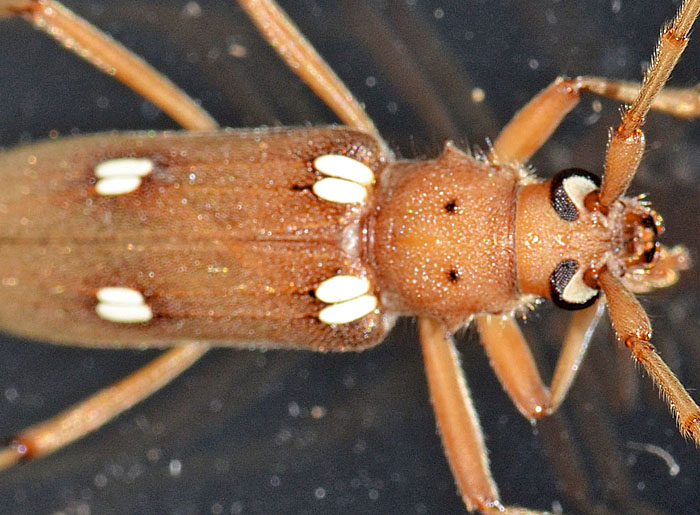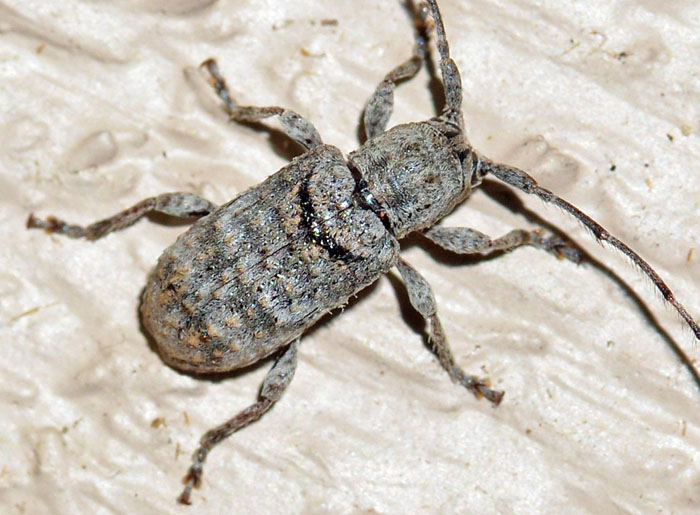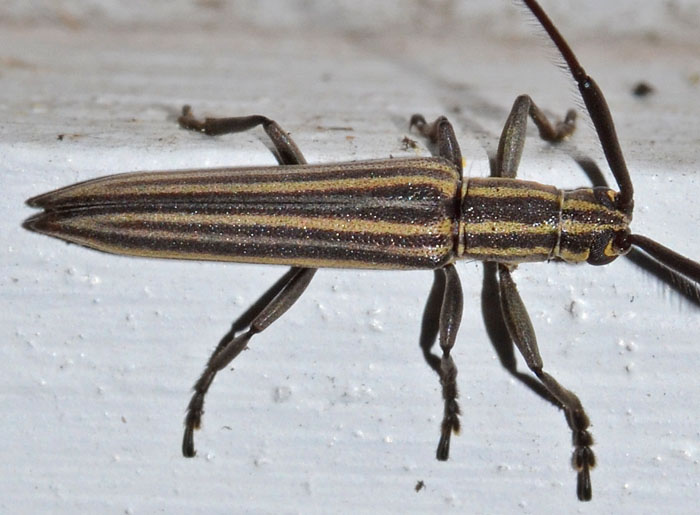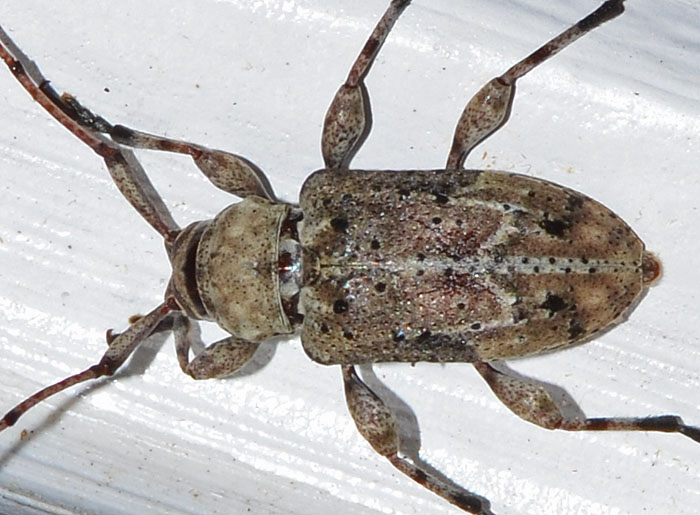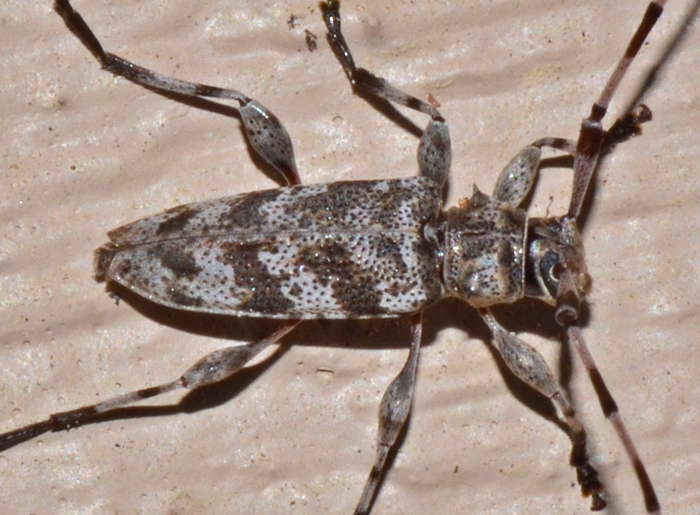 Acanthocinus obsoletus. | Acanthocinus obsoletus feeds on the bark of dead or dying pine trees. The genus has eight species in North America. bug guide (this photo): http://bugguide.net/node/view/1216499 | |
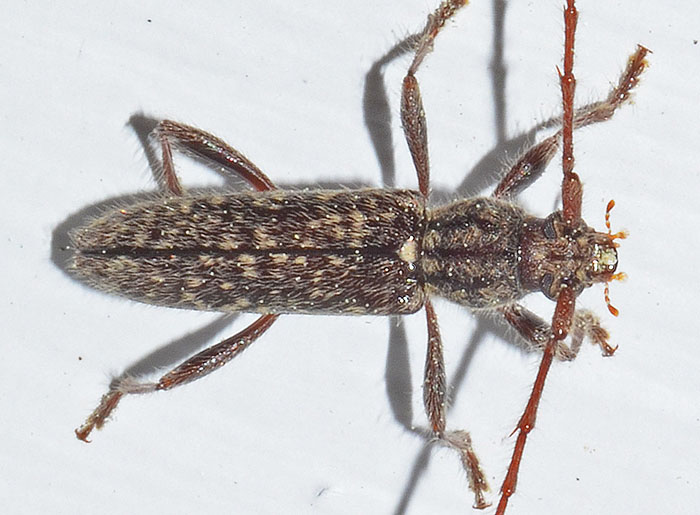 Anelaphus villosus (Twig Pruner). | The Twig Pruner makes his home in the eastern half of the US. Its host plants include oak trees (preferred) as well as many other hardwoods and even shrubs. Damage is inflicted by the larval form, which bores through the twig centers. bug guide (this photo): http://bugguide.net/node/view/1200236 bugwood.org: https://wiki.bugwood.org/Anelaphus_villosus | |
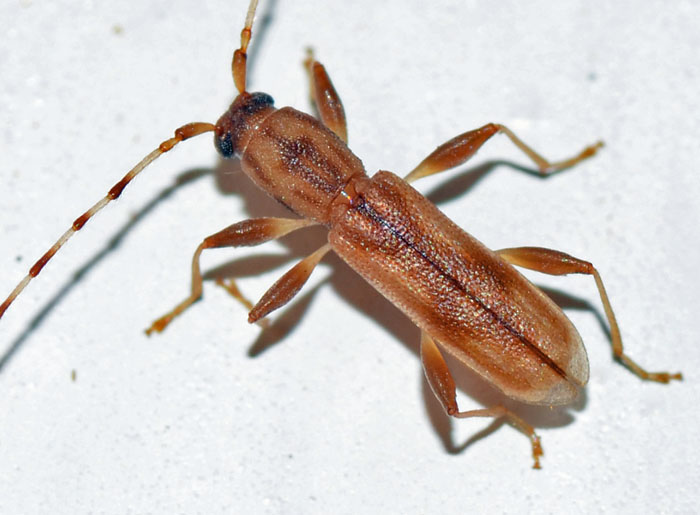 Curius dentatus. | This beetle lives under the bark of small branches (conifers and hardwoods) and adults come to light. Its name refers to Manius Curius Dentatus who was a three-time consul and a plebeian hero of the Roman Republic. According to Pliny, he was born with teeth, thus earning the byname Dentatus, "Toothy". It is unclear to me why the beetle received this name.
bug guide (this photo): http://bugguide.net/node/view/994786 wikipedia (Manius Curius Dentatus): http://tinyurl.com/kl53nzx | |
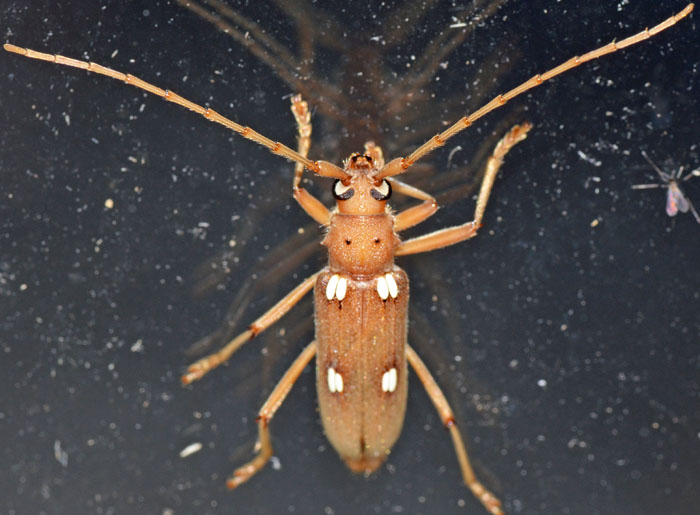 Eburia quadrigeminata. | A big beetle that was attracted to our porch lights. I found the following, remarkable information about this species on bugguide.net: "Notorious for emerging from furniture after as many as 10-40 yrs. Delayed emergence of E. quadrigeminata was discovered from a birch bookcase 40 years old (Jaques 1918)." The small photo below shows a magnified view of the large picture.
bug guide (this photo): http://bugguide.net/node/view/982434 | |
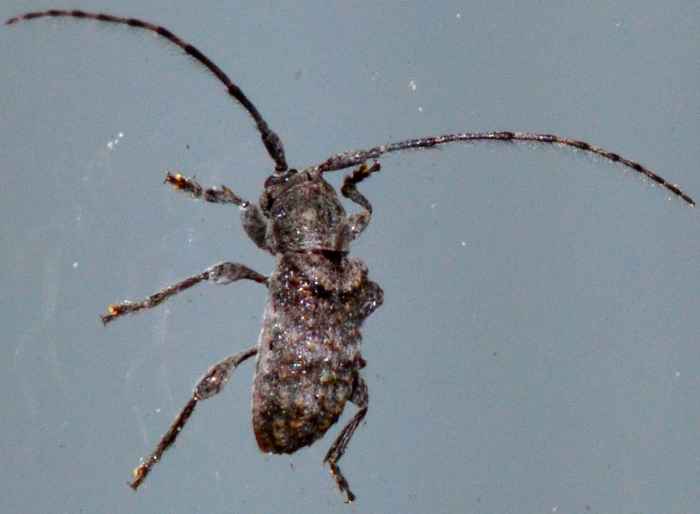 Ecyrus dasycerus. | This longhorned beetle is Ecyrus dasycerus. The second reference states: "Variable in size, and darker and lighter variants occur, but the combination of body shape and the dark, inverted arc-like marking at the elytral base is distinctive (though the mark is sometimes faint)." The small photo shows a different specimen found on 09/14/14.
bug guide (this photo): http://bugguide.net/node/view/636032 D. Yanega Field Guide to Northeastern Longhorned Beetles (Illinois Natural History Survey, 1996): http://www.inhs.uiuc.edu/resources/index.php?action=list&id=%20439 | |
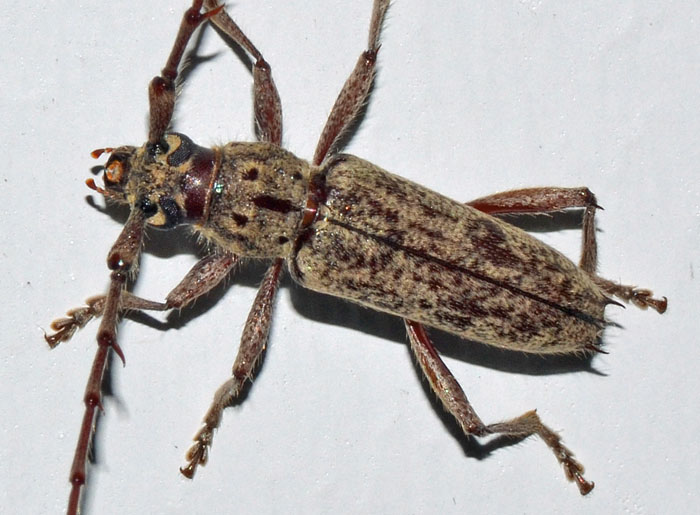 Elaphidion mucronatum (Spined Oak Borer). | The Spined Oak Borer is a common long-horned beetle with very long femoral spines. Its larvae feed underneath dead hardwood bark for the first year and than deeper in the second year.
bug guide (this photo): http://bugguide.net/node/view/1066515 | |
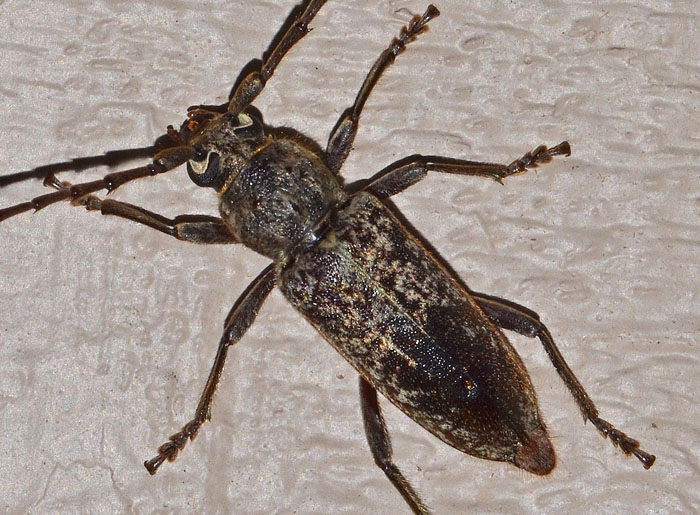 Enaphalodes sp. (Oak Borer). | This Oak Borer is either Enaphalodes atomarius or E. cortiphagus. Quoting from the second link: "All species of Enaphalodes are nocturnal and strongly attracted
to lights; adults emerge from hosts at night from April-October in the United
States and do a little feeding on twigs and foliage. They aggregate on sapflows
and can be collected with fermented solutions." bug guide (this photo): http://bugguide.net/node/view/1126513 Lingafelter & Chemsak, Col. Bull. 56, 569, 2002: http://tinyurl.com/enaphalodes | |
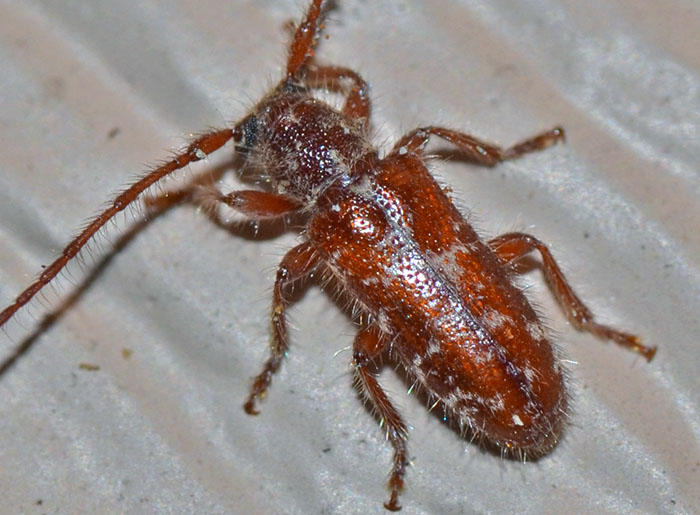 Eupogonius tomentosus. | This flat-faced longhorn beetle is covered by fine "hairs"; a characteristic feature that is reflected in its species name. The larvae feed on pine trees (dead needles), spruce, and conifers (Chamaecyparis).
bug guide (this photo): http://bugguide.net/node/view/1368429 | |
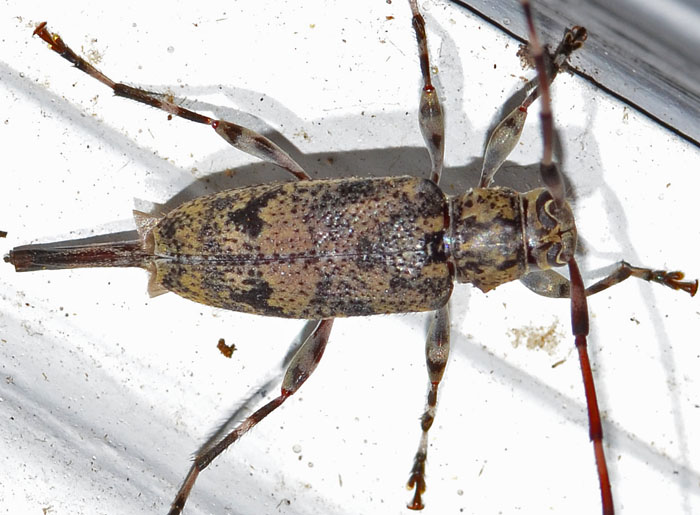 Graphisurus fasciatus ♀. | This flat-faced longhorn, Graphisurus fasciatus, prefers hardwood trees and pines. It is wide-spread throughout the eastern half of the country. The genus has three species in the US with G. fasciatus being the most frequent one in Florida and Georgia. bug guide (this photo): http://bugguide.net/node/view/983128 | |
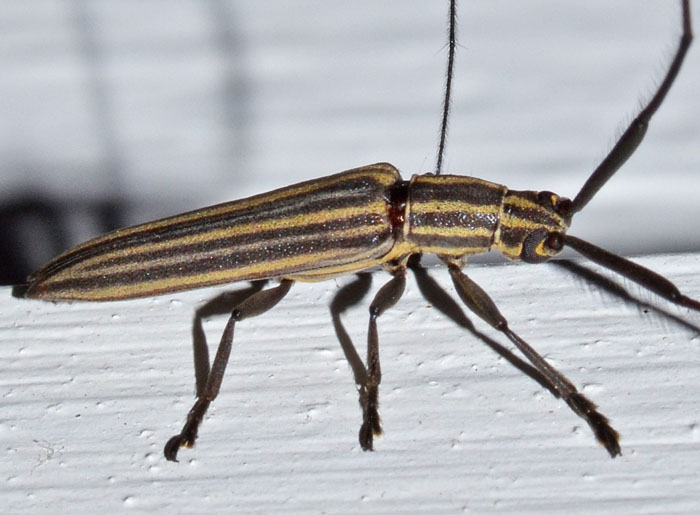 Hippopsis lemniscata. | I think this long-horned beetle looks great. It is Hippopsis lemniscata. It feeds on common ragweed (Ambrosia artemisiifolia), which as far as I am concerned, makes it even better but unfortunately the "destruction by larval H. lemniscata does not appear to affect the competitive or reproductive capacities of A. artemisiifolia."
bug guide (this photo): http://bugguide.net/node/view/1222403 G.L. Pieper, Coleop. Bull. 31, 273, 1977: http://www.jstor.org/stable/3999967?seq=1#page_scan_tab_contents | |
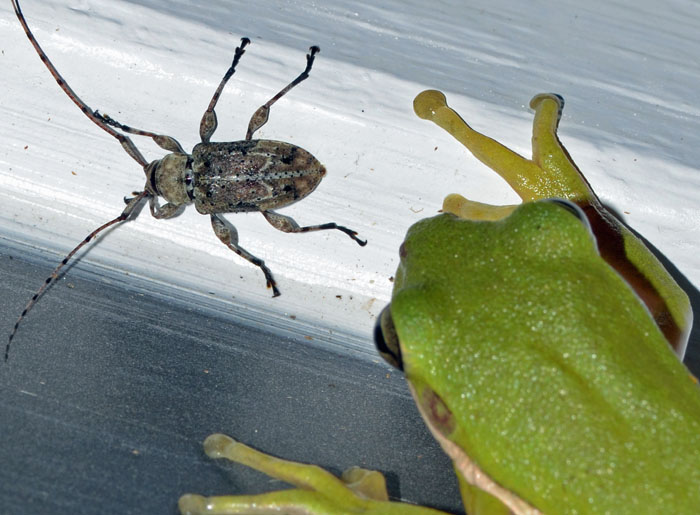 Leptostylopsis planidorsus. | This beetle belongs to the exceptionally large subfamily of the Flat-Faced Longhorns. From the few entries in bugguide, I guess that it is found mainly in Southeastern US. Within this range, the genus has five species. The large photo shows one of our many frogs. The rather large frog stared at the resting beetle for several minutes but then turned around and focused on other things. Was the potential meal too big, not tasty, too long-horned?
bug guide (these photos): http://bugguide.net/node/view/976872 | |
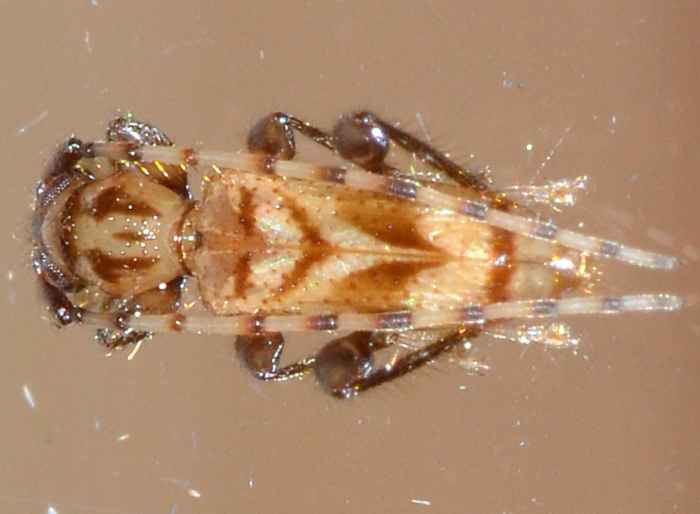 Obrium maculatum. | This common longhorned beetle is Obrium maculatum. It feeds on many hardwoods and shrubs. bug guide (this photo): http://bugguide.net/node/view/635289 | |
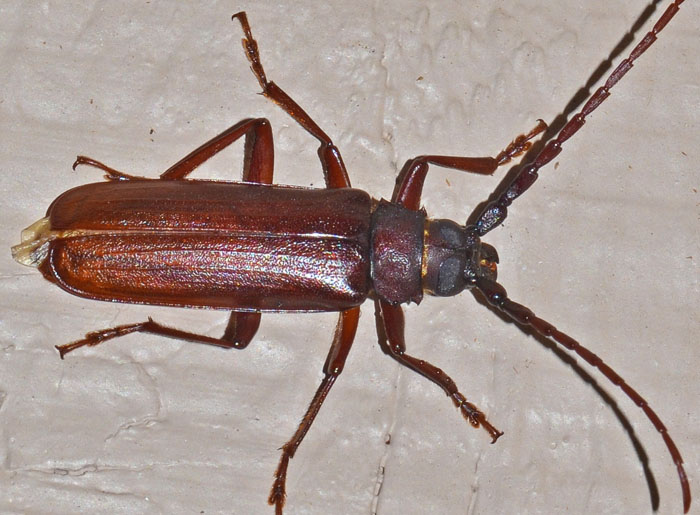 Orthosoma brunneum (Brown Prionid). | This big boy is a Brown Prionid that was attracted by our porch lights. The common, wood-boring beetle lives in moist forests. Its larvae breed in rotting, wet wood. Mated females are attracted by carbon dioxide and oviposit most frequently in places where the concentration of the gas is highest. bug guide (this photo): http://bugguide.net/node/view/990482 Paim and Beckel, Cand. J. Zool. 42, 295, 1964: http://tinyurl.com/orthosoma | |
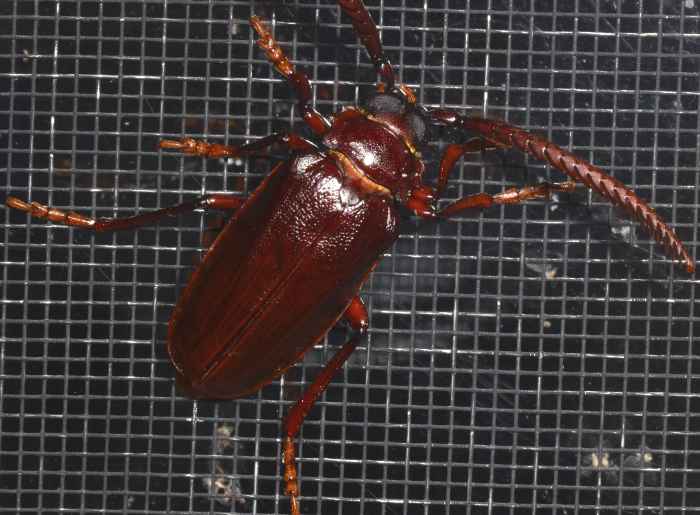 Prionus imbricornis (?) (Tile-horned Prionus). | This very big and impressive beetle is probably Prionus imbricornis. bug guide (this photo): http://bugguide.net/node/view/658311 | |
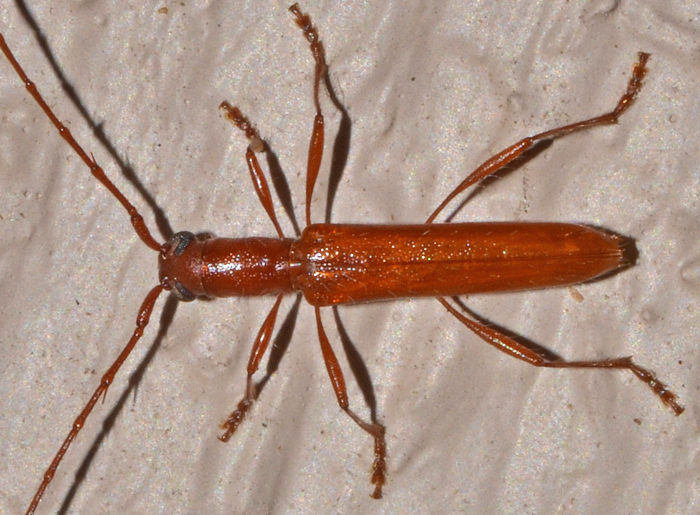 Psyrassa sp.. | Five species of Psyrassa can be found in the US and two of those (P. unicolor and P. pertenuis) in the Eastern half. The larvae feed on tree branches (especially hickory and pecan trees) and create deep damage that can cause them to break, typically before leafout in spring.
bug guide (this photo): http://bugguide.net/node/view/1217988 | |
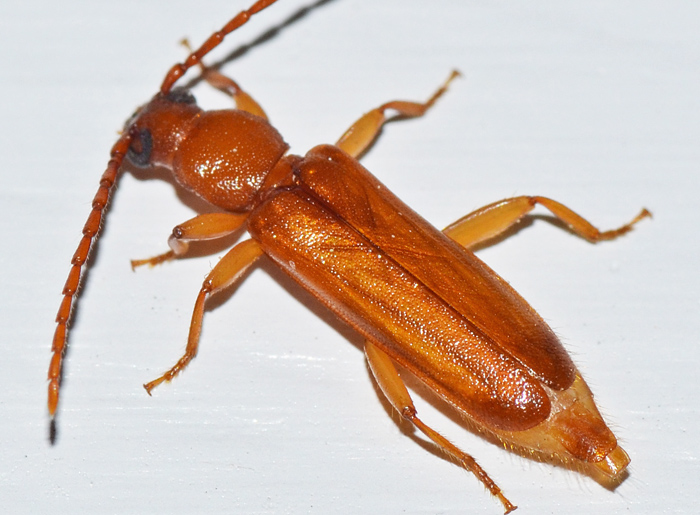 Smodicum cucujiforme. | Larval development of this species is completed in about one year but can take up to three years in seasoned wood (hardwoods, especially oak, hickory, and maple). The Flat Oak Borer often infests stored lumber and larvae continue to feed after the wood is in use. Another common name is Flat Powder-post Beetle. This specimen was attracted by our porch lights. bug guide (this photo): http://bugguide.net/node/view/1236064 | |
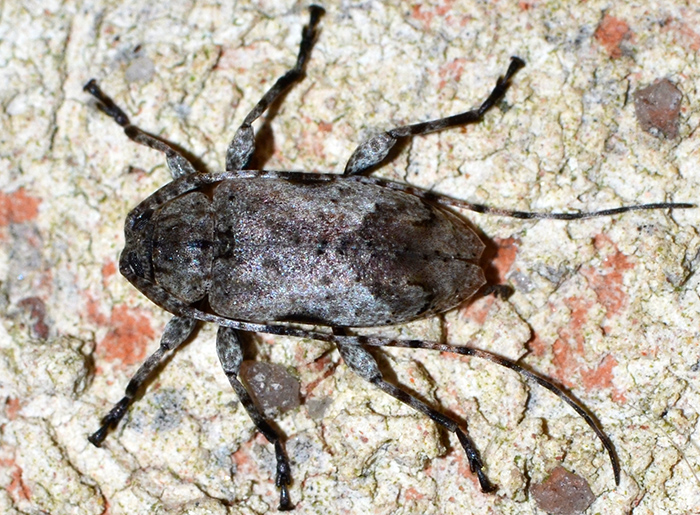 Styloleptus biustus. | This flat-faced longhorn beetle represents the only US species in the genus Styloleptus. bug guide (this photo): https://bugguide.net/node/view/1512537 | |
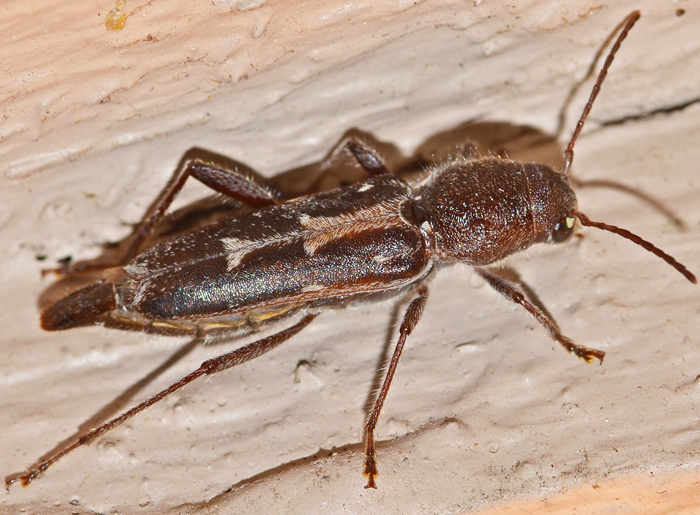 Xylotrechus sagittatus (Arrowhead Borer). | ... and the sister species Xylotrechus sagittatus. The pale markings down the midline of elytra can form a line of arrowheads pointing towards head like in this specimen. The larvae feed on conifers, especially pines.
bug guide (this photo): http://bugguide.net/node/view/1250253 | |
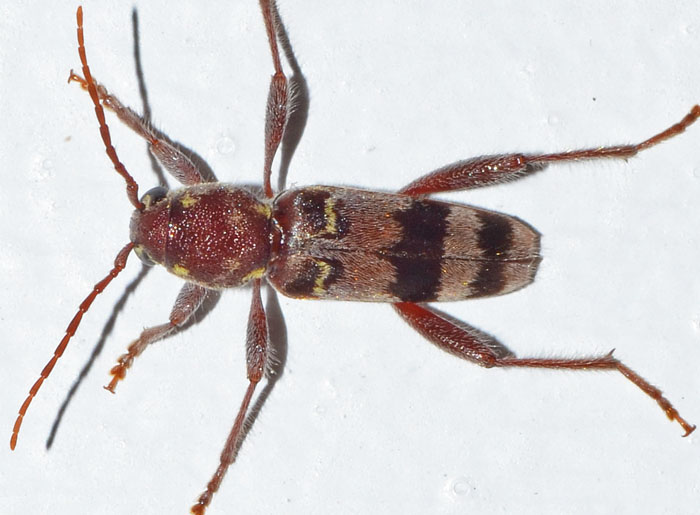 Xylotrechus colonus (Rustic Borer). | This very common member of Cerambycidae is the Rustic Borer. Notice the sinuate yellowish, transverse band which is distinctive. Its larvae develop in virtually all eastern hardwoods including pine. It is one of 27 Xylotrechus species in North America. Adult Rustic Borers aggregate on cut logs and fallen trees. Males actively search for females, and only respond to them after contacting them with their antennae. The contact pheromone is a blend of three hydrocarbons (n-pentacosane, 9-methylpentacosane, and 3-methylpentacosane). bug guide (this photo): http://bugguide.net/node/view/1123070 Ginzel et al. J. Chem. Ecol. 29, 533, 2003: http://www.ncbi.nlm.nih.gov/pubmed/12757317 |

